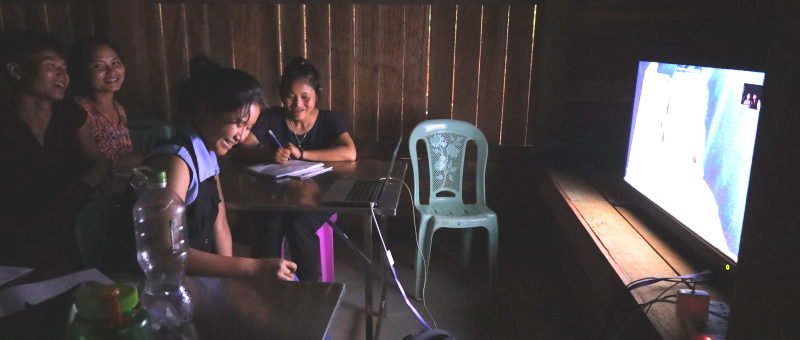Blurry Faces in a War Zone
Our students are unable to attend Year 1 of our program in Chiang Mai. Normally, the first year of our 5-year Physician Assistant training program takes place here in Northern Thailand. The social-political conflict in Myanmar is preventing our students from crossing the border rather than the current COVID-19 pandemic. We could have thrown the towel in and told our students to wait another year. These same students have been waiting a year since their acceptance into the program and kept calling to ask when they could start. Then in April, we decided as a team to begin teaching our Year 1 students over video. As the science teacher at EMA, I have been tackling the challenges of online teaching in this unique cross-cultural context alongside my fellow teachers. Here is my experience so far:
To better understand what the experience is like, let me give you some context. The students are in our remote clinic. This means that they are deep in the jungle in a location where healthcare services are desperately needed. They have to put up the satellites each morning to access the internet. The reason they cannot keep them up permanently is to avoid being spotted. There have been days in recent months where planes were flying overhead and dropping bombs. There is only enough bandwidth to support one internet user at a time. If more people connect to the internet at the clinic, it will slow everyone down significantly. During online classes, the bandwidth is just enough to support video. The students gather around a computer connected to a monitor. Sometimes I see the students taking photos of the monitor during class. The students’ faces are blurry, and there is significant lag. Every day the lag time seems to be different. Some days I have to wait three seconds before the students hear what I said. Other days it can be five or ten seconds of lag time.
My teaching style is active, and often I have the students engaged in an activity or game. I stand up and show them what I want them to do and need to make sure the camera is adjusted. I say “to your left, my right” or “your right, my left” enough times that it is confusing. I have found that trial and error work best here until they get what I was expecting. The students must tell me who won the game since I can’t always tell who it is. When the students draw something on paper, they present it to me by putting the image really close to the camera until I say it’s in focus enough to see. One time I had the students play musical chairs to warm up, and they kept mistaking the lag for me stopping the music. I found the students falling over each other and chairs being knocked down when the music was still playing. This gave the eliminated students another chance at glory while the others a false sense of security.
When I began teaching, I tried to show them videos. I asked them if they could see the video if I share my screen. It was too choppy and low quality for them to watch it. Then I tried to download a video before class and then show it to them. It still had the same troubles as before. The only other solution would be to send the videos to the teaching assistant and have her download it on their end. However, the only other times the satellite was up would be when other classes were in session. I rely heavily on videos in all my classes and now must adjust.
Another thing I rely heavily on is whiteboards. This is where my laptop, with its touch screen and compatible pen, came in huge. I can share a virtual whiteboard and use my pen to write directly on my screen. It comes in handy if it can be seen by the students.
The following mishaps have occurred at one point in time:
Another meeting was scheduled during the science class slot
I mistakenly taught science during the math class slot
Another in-person class on surgery was happening in the same room at the same time
Rain was pouring so hard that we could not hear each other
The laptop battery died on their end
The call dropped on their end
The call dropped on my end
They froze, and then when it caught up, they were all moving at superspeed
My children barged into my office and interrupted class
My dogs wouldn’t stop barking loudly because they found a snake in my yard
After all these hiccups and challenges, we all still log on and continue to do our best, given the circumstances. Nothing is the same during this virtual experience for either side. However, there is one constant whether we meet in person or virtually; the students’ joy and motivation to learn so that they can help their people.
Their smiling blurry faces and delayed laughs keep me motivated to make the best of this situation. I hope one day that I can jump out of the monitor and visit them in the flesh. Until then, the virtual classroom it is. During these unique pandemic times, many of you around the world are learning how to use new online tools and virtual meeting techniques. Thank you for sharing my experience and catching a glimpse into how online learning has impacted Earth Mission Asia.

